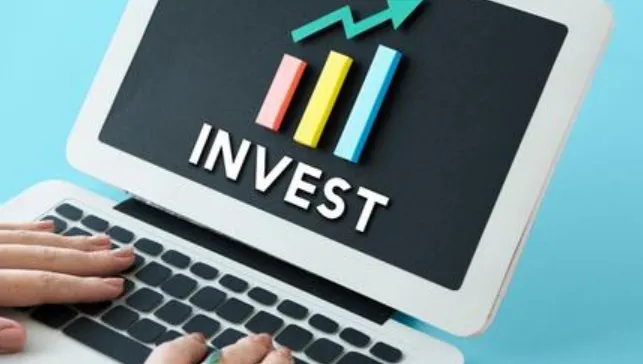Words on Wealth: know the pitfalls of DIY investing

Explore the growing trend of DIY investing, its benefits, and the potential pitfalls that new investors should be aware of. Learn how to navigate the complexities of the investment landscape with insights from industry experts.
Image: File photo.
Are you a do-it-yourself investor or toying with becoming one? You may be relatively young, with a promising career path ahead of you, but have not, until now, seriously considered investing a portion of your monthly salary cheque with a financial goal in mind. Or you may have received a large sum of money, perhaps as an inheritance, that you are looking to invest and are considering doing it yourself.
DIY investing is incredibly easy and becoming easier by the day, thanks to the proliferation of online share trading and investment platforms. The banks have their own share platforms that you can link to your bank account. For unit trust funds, most providers make it relatively easy for retail investors to invest in their products directly via an online application.
What’s not to like? Online convenience. No middle men. Lower costs if you’re investing in index-tracking funds. Abundant choice…
The first thing you should consider is your knowledge of the subject. Do you know that you can buy an actual share in a company or a derivative of that share, known as a CFD (contract for difference), and that the latter is little more than taking a bet on the share price? Do you know the difference between a unit trust fund and an exchange-traded fund, or what dividends are and how they can boost your returns? Do you know what “leverage” means and that it can result in you losing more money than you invested?
A lack of knowledge can be rectified online. Just as there are hundreds of ways to trade or invest, so too there are innumerable videos, courses, articles, discussion groups, “finfluencers”, and other means of learning the ropes. (Be careful, though: how do you know that your favourite “finfluencer” really knows what he is talking about or genuinely has your interests at heart?)
Ten years ago, I covered a talk on the rise of DIY investing by Henry van Deventer, who was then regional head of wealth development at Old Mutual and currently holds the position of chief specialist of advice model design at Liberty Group. While the investment world has changed drastically since 2015, the main points of Van Deventer’s talk still hold. The dangers of DIY investing, he said, include:
• Short-term focus. In the past, Van Deventer said, investing, particularly on the stock market, was an expensive and relatively laborious affair, requiring physical consultation with an investment or stockbroker. Today, it is easier and cheaper than ever before, either to open a share trading account online or to buy and sell collective investments. But the problem with being able to enter and exit the markets so easily is that we tend to focus on the short term. If we start focusing on profits made in a day, week, or a month, we start making shorter-term decisions, and “good short-term decisions are rarely good long-term decisions”, Van Deventer said.
• Over-confidence. Van Deventer quoted research showing that 90 percent of people believe they’re above-average drivers. “The same applies to investors. We tend to be over-confident in our abilities to manage our investments and make the correct investment decisions,” he said. Over-confidence is reinforced by what is known as confirmation bias. We tend to home in on information that confirms our opinions and reject everything to the contrary. Hence we lose sight of the bigger picture. “If you are a DIY investor, be sure to be honest with yourself about what’s working and not working, and how to measure your success. Otherwise, things can go horribly wrong.”
• An excess of information and choice. One of the challenges of the internet is the amount of information it makes available, Van Deventer said. We also have a far wider choice than ever before – in South Africa, there are now more than 1,600 unit trusts to choose from, to say nothing of other types of investment and offshore opportunities. This can bewilder the most seasoned of investors. Van Deventer said that to get the best out of all this information and variety, we need to understand ourselves and what we are looking for in terms of our investments.
If, instead of simply chasing the highest returns at the lowest cost, you take a strategic approach, with an objective in mind, investing then becomes a matter of giving yourself the best chance of achieving that objective. Here, the financial planner has an important role to play, but it isn’t so much in providing knowledge.
“In the past,” Van Deventer said, “we looked to professionals for knowledge, but now it is for guidance, because we can obtain the knowledge so easily. So it becomes a question not of what I can do, but what should I do.”
Adriaan Pask, chief investment officer at PSG Wealth, has also written about the information and choice overload facing today’s investors. “In theory, more options should lead to better outcomes, but at a certain point, the utility of additional choice begins to decline. Instead of empowering investors, too much choice can paralyse them or lead them to chase shiny new offerings that aren’t aligned with their long-term goals,” he says.
‘Wealth management is, by nature, a long-term exercise,” Pask says. “It’s about planning, and good planning requires consistency, reliability, and clarity of purpose. The plan should always be above the product. The plan identifies the investor’s needs and objectives clearly. The product is a supporting tool to help implement the plan – not the other way around.”
* Hesse is the former editor of Personal Finance.
PERSONAL FINANCE